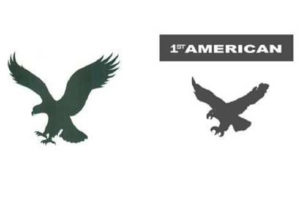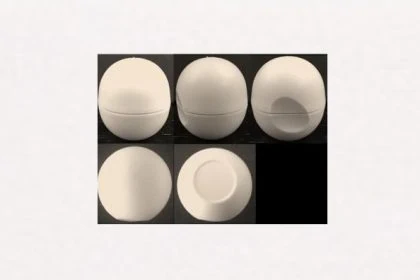Eagle trade marks for similar goods and from similar companies in the fashion industry: Despite the very high visual similarity of the marks, the European Court annulled the previous decision on the likelihood of confusion between two eagle union marks – the word element had not been assessed as a whole by the Board of Appeal.
Eagle trademark for similar goods

The applicant Fashion Energy Srl (Italy) and the intervener – and proprietor of the earlier Adler figurative mark – Retail Royalty Company (USA) are both undertakings active in the fashion and textile industries. The proceedings concerning distinctive character and likelihood of confusion focused on two Union trade marks showing a very similar eagle. The earlier mark of the Retail Royalty Company is protected as a Union figurative mark, the later mark applied for of Fashion Energy from Italy also has additionally the word element ‘1st AMERICAN’, i.e. a European word and figurative mark.
Moreover, although the two marks were applied for in predominantly different Nice classes, they were applied for in similar groups of goods. Thus, the European Court had to decide whether glasses (Nice Class 9, (Fashion Energy)) also included sunglasses (Nice Class 35). The CJEU saw “glasses” as a broad term which also included sunglasses.
Glasses similar to sunglasses?
The plaintiff denied this, but the court pointed out that the previous case law had already classified glasses and sunglasses not only as similar, but as identical. In February 2017 (in judgment 2 STAR, EU:T:2017:78), the court ruled that “spectacle frames”, “sunglasses frames” and “spectacles and sunglasses cases” were not “similar” but even identical to “optical frames and their accessories, spectacle cases and accessories”.
As the goods of the other Nice classes were also considered similar by the CJEU – “home textiles and bed linen” in class 24 (Fashion Energy) and “garments” in class 25 (Retail Royalty) – the CJEU ruled that the goods and services in question are similar or identical.
Likelihood of confusion with cumulative conditions
For Article 8(1)(b) of Regulation No 207/2009 to apply, the likelihood of confusion presupposes that the marks in question are identical or similar and that the goods or services covered by them are identical or similar. Those conditions are cumulative. Other factors, such as the distribution channels of the goods concerned, may also be taken into account.
In addition, the CJEU clarified that if there is a likelihood of confusion between two EU trademarks in a Member State, this is a sufficient reason to refuse registration of the later trademark. It is sufficient for the rejection of an EU trademark that a relative ground for refusal exists in one part of the European Union.
Distinctiveness of astonishingly similar eagles?
The likelihood of confusion, which both the Opposition Division of the EUIPO and the Board of Appeal had seen in their decisions, was also widely shared by the CJEU. Thus, the Court confirmed the very high visual similarity of the figurative elements, i.e. the representation of the eagle. This was accompanied by a conceptual similarity.
The applicant argued that this type of figurative element was very common in the fashion and textile sectors and that the eagle’s distinctive character was therefore weak. The Court did not wish to accept that argument. The striking similarity between the two eagle representations is obvious – and the eagles occupy a large area of the marks at issue.
However, the CFI pointed out that even if an element common to the signs in question cannot be considered to dominate the overall impression, it must be taken into account when assessing the similarity of those signs. Moreover, it is settled case-law that where a mark consists of both verbal and visual elements, the former are, in principle, more distinctive than the latter. It is easier for the average consumer to rely on the goods in question by citing their name than the figurative element of the mark.
Distinctive character must be based on overall perception of the mark
However, the decisive factor for the judgment is that, in the case of a composite mark, although each distinctive character may be assessed in part for each of the terms or elements taken individually – the Board of Appeal had assessed individually the word elements of the later mark and found them to have weak distinctive character – it must in any event be based on the overall perception of that mark. And the Board of Appeal did not take such an overall view of the verbal element as a whole. The conclusion as to the weak distinctive character of the element “1st AMERICAN” as a whole was in no way substantiated, the CJEU held.
This error committed by the Board of Appeal was liable to vitiate its entire assessment contained in its decision, the CJEU held. The Court therefore annulled the decision of the Board of Appeal of 15 November 2017 (Case R 693/2017-2).
Would you also like to protect your trade mark or trade name?
Our lawyers will be happy to advise you. If you are interested, please contact us – also via our non-binding recall offer!








Leave a Reply